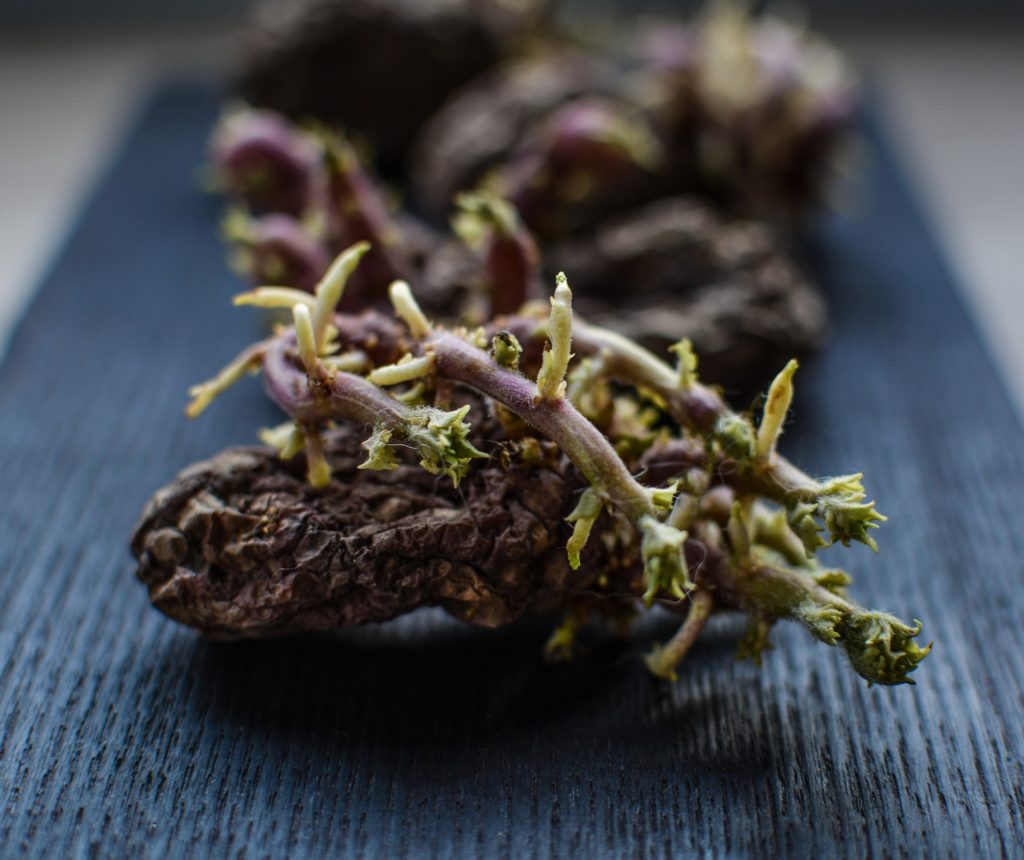Seed potatoes are harvested from potato plants to store over the course of winter, and are replanted during the early spring. In a perfect world, these potatoes make it through winter just fine, and they don’t sprout until spring is knocking on the door.
That couldn’t be further from how things tend to work on a homestead!
Instead, you’ll find many of your potatoes sprouting incredibly early. Perhaps during November or December, sometimes earlier! So, what can we do to fix this problem???
There are a few different methods used, and we will discuss each one. However, my personal favorite is to keep the potatoes in a dormant environment from day one; you can stall the process with this method, but it also depends upon the size of the sprouts and condition of the seed potato when you find it sprouting. If you find yourself having the OPPOSITE problem, slide on over to “My Potatoes Won’t Chit“ for an alternate course of action. Now, let’s fix those potatoes!

Check out these other posts for more great reads after this one!
- 5 Amazing Ways Potatoes and Herbs/Flowers Can Work Together
- NEVER Plant These Crops Beside Your Potato Plants!
Breaking Off Bad or Weak Sprouts: Use Caution!!!
For potatoes that have long, spindly, thin, weak sprouts, it’s safe to say that these sprouts need to go. The white sprouts retain their color due to lack of light. If the sprout reaches light, it turns green and stays shorter as it develops leaves. Otherwise, it becomes long and spindly in search of light. Warmer temperatures increase the rate of growth.
If you see these long thin sprouts, break them off! They will likely fail if planted. If the potato is still plump and free of any signs of disease, injury, or wrinkles, it should produce more sprouts in the future without a problem. However, you do not want to injure the potato when doing this; break the sprout off from the stem, do not rip it out of the potato. Otherwise, this could be a potential wound opening up for infection.

Are You Using Proper Storage Procedures?
If you are not using proper storage procedures for your seed potatoes, you will likely encounter sprouting over, and over, and over again. In order to keep them from sprouting, you need to use proper storage techniques. You want to simulate the way a potato overwinters in soil. Therefore, your seed potatoes’ environment should be:
- Humid. Soil is naturally humid, and can be particularly damp during the winter. Dry air can make storage a bit difficult, especially for thinner skinned potato varieties.
- Dry. The potatoes should never be stored in or near liquid. If there is standing water, perhaps from a leak, potatoes will potentially rot or sprout. Try keeping potatoes in a bed of straw.
- Clean, Pest Free, & Mold Free. The storage area should be free of mold, dirt, mildew, and any other harmful organisms. Mice and rats may decimate potatoes in storage, so ensure that there are no rodent problems in your home. If potatoes begin to rot or decompose in storage, remove them before they destroy the other seed potatoes!
- Dark. You do not want light getting to your potatoes. Light will help to initiate the production of chlorophyll, which sparks the growth of green foliage. This is exactly what you’re avoiding.
- Cool. The colder, the better! I personally find that potatoes store best when cold. Most will tell you not to do this, as it’ll cause the carbohydrates to change chemically. It’ll give the potatoes a sweet taste; but this isn’t important, because you will be using the potatoes as seeds.
The Best Way to Stop Potato Sprouts When It’s November, December, January, or February
If I have potatoes in storage that are sprouting, I immediately move them to the fridge! It greatly stunts the growth of the sprout, and they come out of the refrigerator just as good as the day they went in. I find my potatoes keep through the winter far better this way! If your potatoes are sprouting extra early in the off season, place them in the fridge and watch what happens! They won’t shrivel up and use all of their energy stores in the fridge, allowing them to thrive in the spring. It’s as if you’re putting their growth on “pause”.

